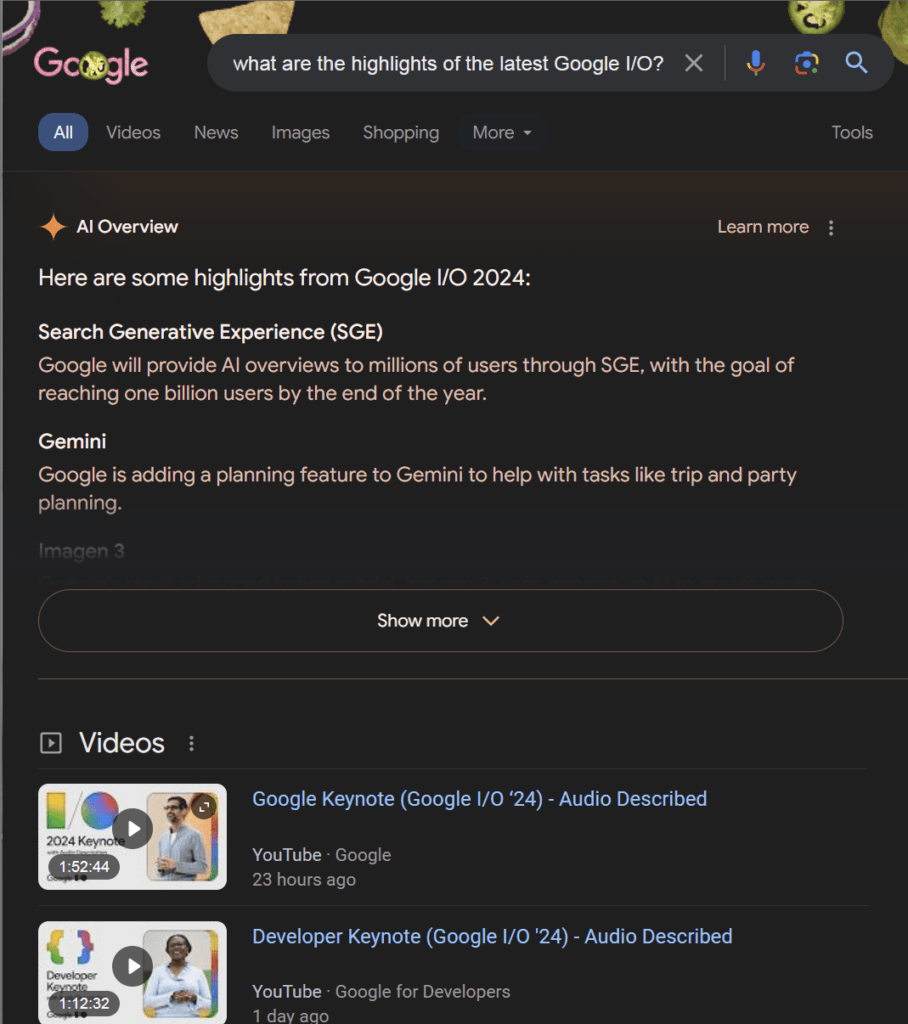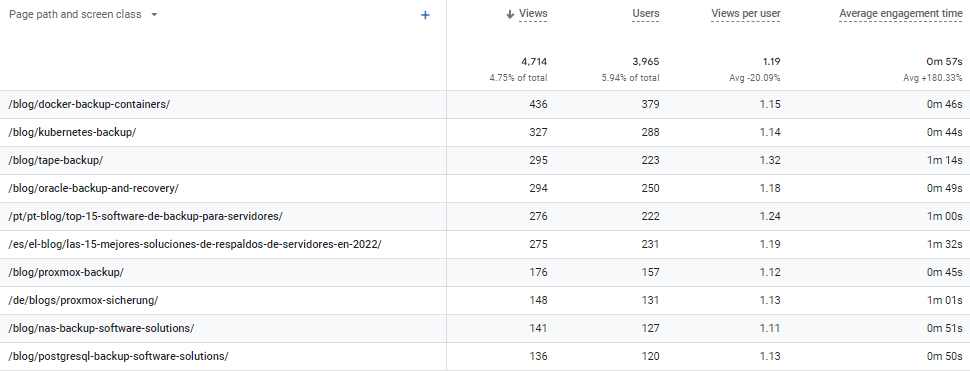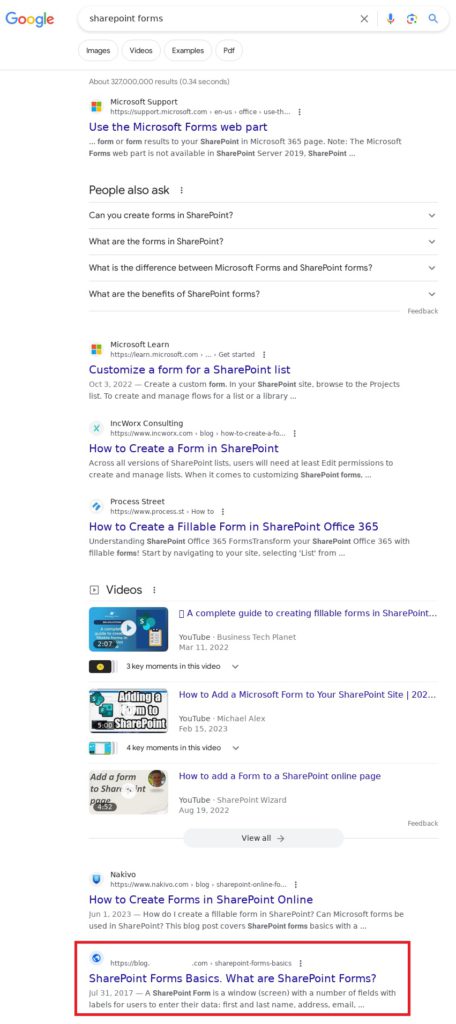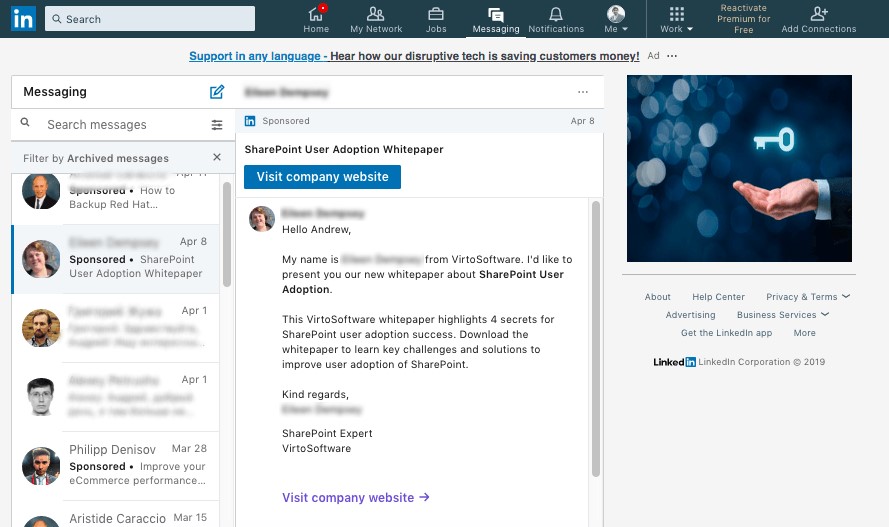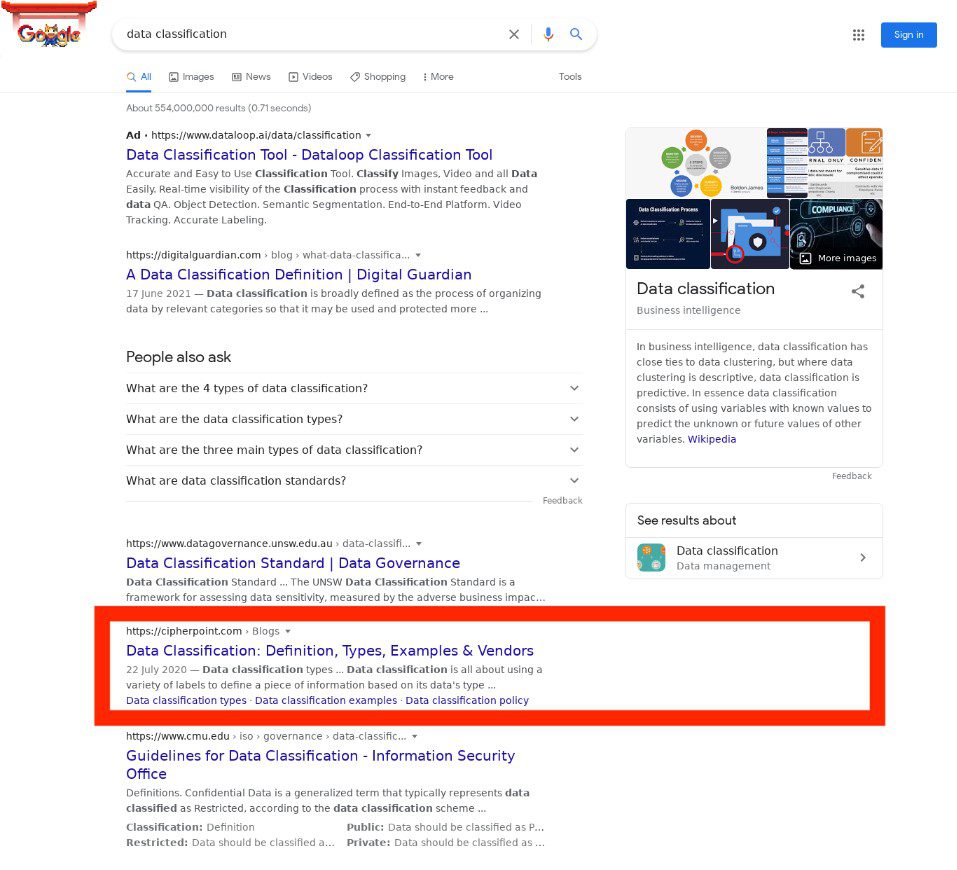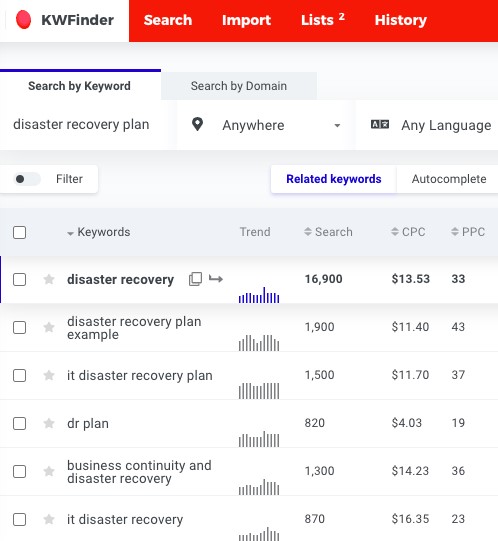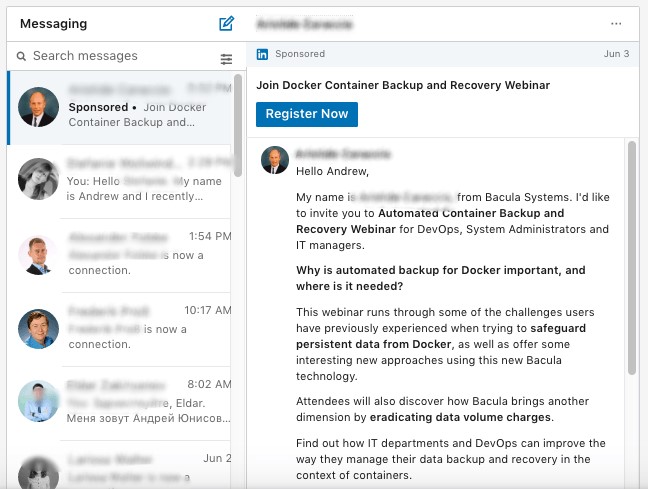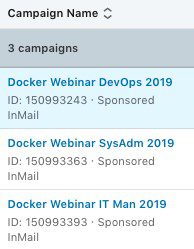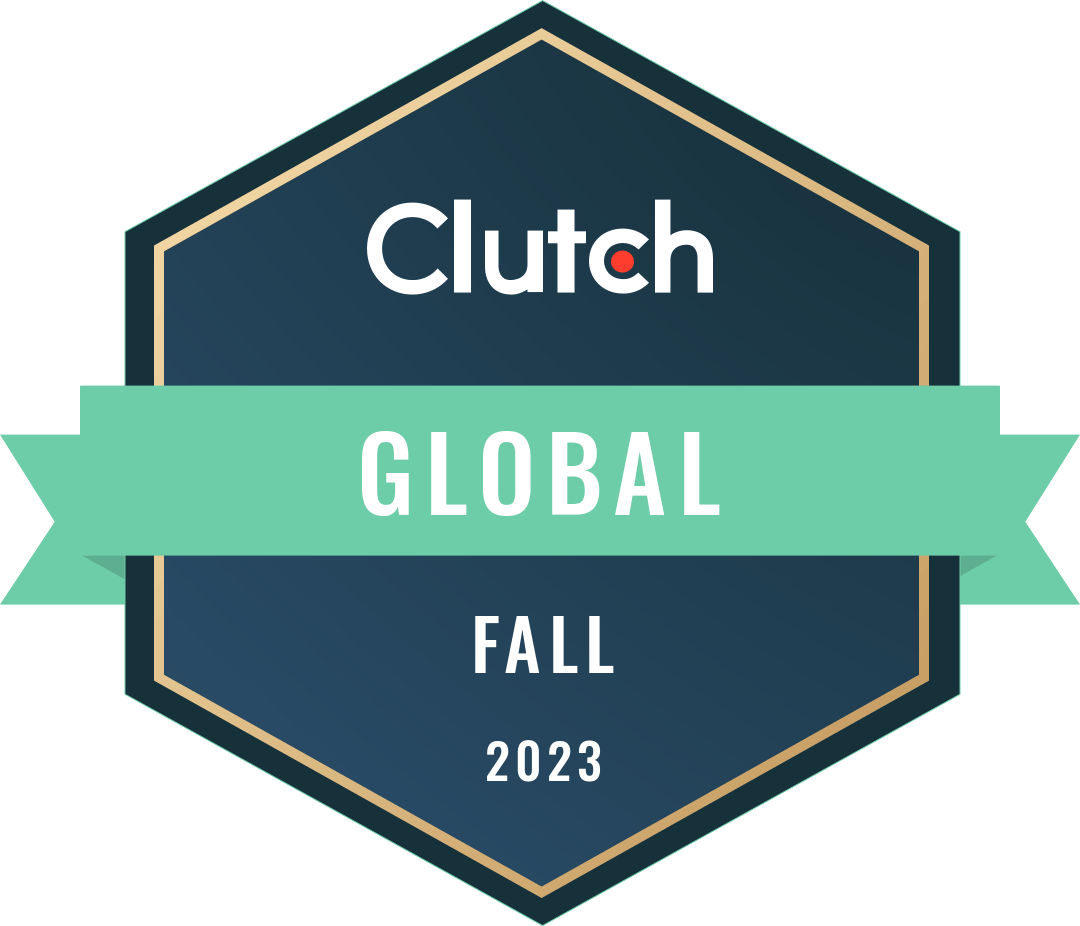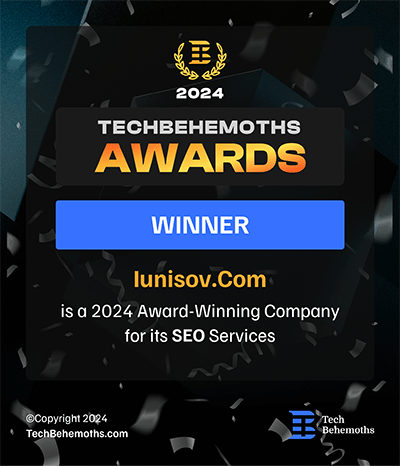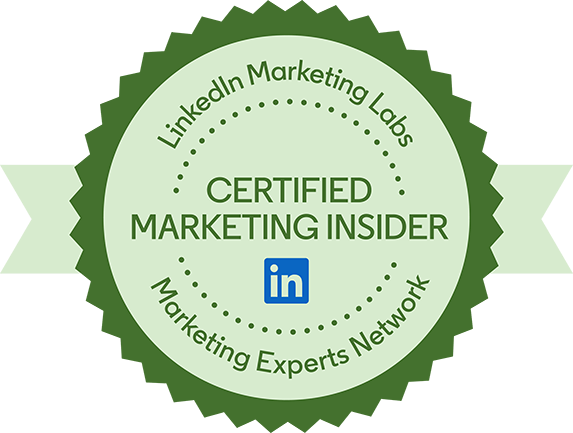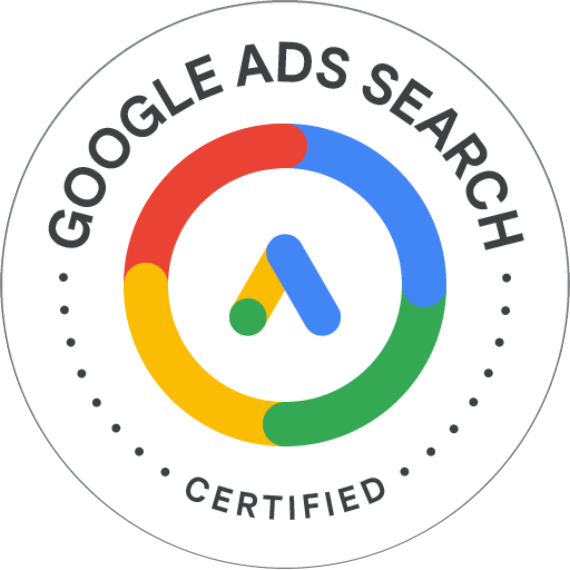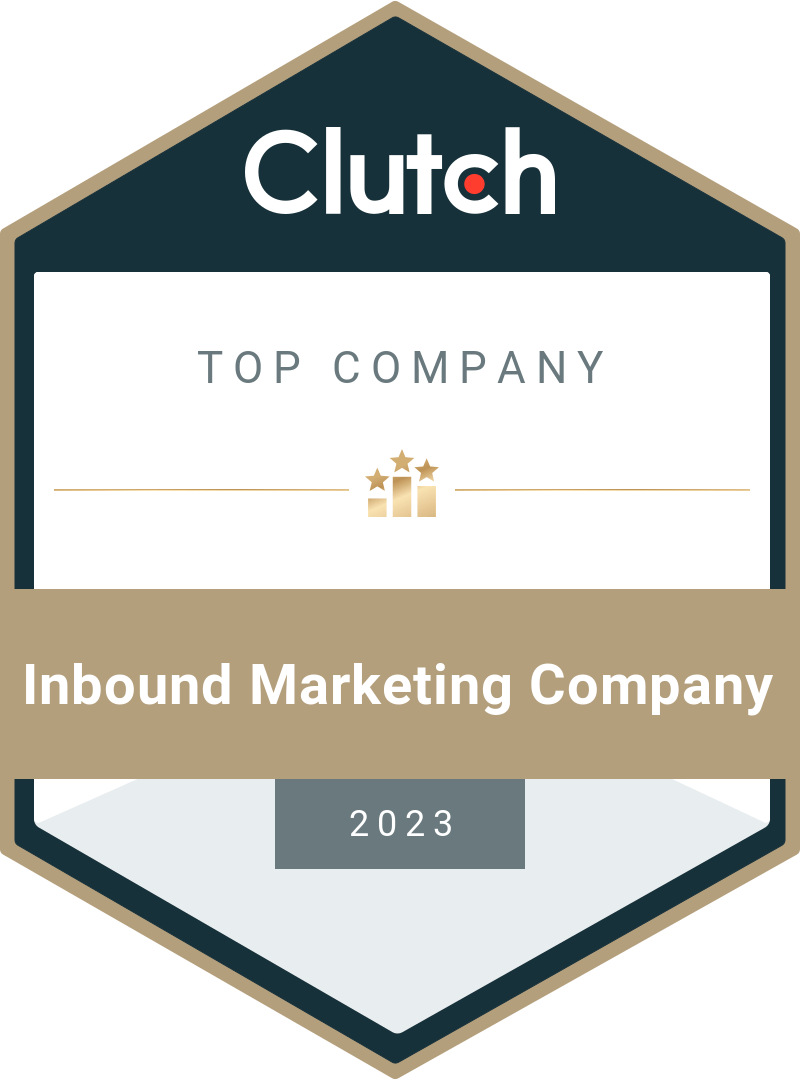Lead Generation for Tech Companies: Best Practices & Case Studies
Date : July 29, 2024 By
Contents
Key Takeaways
- Discover key strategies of lead generation for technology companies.
- Read on to learn the best lead generation channels and messaging.
- In this article, you can discover real-life case studies that drove growth.
Top 5 changes in the lead’s journey for tech companies in 2024
Over the last few years, the widespread adoption of innovative digital technologies has become one of the most significant factors in transforming the lead’s journey in the tech industry. Another factor that has contributed to the same change is a significant shift in consumer behavior while shopping for technology products. Some of the most notable changes in this journey are:
Simplified Access to Information with AI
The access to information using digital technologies has radically changed with the rise of AI. Any potential client or lead could research all potential technology vendors using traditional internet resources, including detailed product information, customer opinions, expert and analyst recommendations, source code, etc. Conventional search engines have made the buyer’s journey a lot more customer-centric in the past, but in 2023 we witnessed another paradigm shift with the rapid adoption of AI. For instance, the introduction of AI Overviews in Google has influenced a significant change in customer behavior, with the tech vendors having to adapt their content for the new type of search results.
Another example could be the recent beta announcement of SearchGPT, which will obviously change how technology buyers discover information and use it for purchasing decisions. Technology marketers will have to adjust their content and product messaging to the fact that AI is collecting, processing, organizing, and presenting information for buyers instead of just providing a list of websites, as it was in the past.
Faster Comparison of Products and Solutions
Not only is it becoming much easier and faster in 2024 to acquire plenty of information about each technology product, but many potential clients use this information to compare products with each other. Customer reviews, comparative videos, and competitive content help tech marketers provide value for potential clients in the middle of the funnel when the pain point has already been figured out and the customer is evaluating several alternatives. Platforms such as TrustRadius, G2, or Capterra have more than 2.5 million verified customer reviews making them extremely useful for any potential buyer.

These reviews are not biased and describe each of the customer experience aspects, for example, the reliability of the product, its ease of use and usability, the speed of adoption, or the quality of technical support. Such detailed reviews help prospects to make informed decisions while motivating software sellers to manage their representation on such platforms.
Leveraging Influencers to Build Trust
The very technical aspect of the industry also leads to a considerable emphasis on influencers in the industry on social media platforms, particularly those of the tech variety. Many potential customers look for insights and recommendations on platforms such as YouTube, LinkedIn, and Twitter. In this context, tech companies must work with these channels and not only ensure that they have the right content listed on them, but also should leverage third-party content from influencers. Many technology buyers are extremely cautious of vendor claims (for instance, vendors claiming that they support a particular feature or functionality). Therefore, influencers as third parties play a vital role in enhancing the trust between the vendor and the potential customer. YouTube allows influencers to prove the existence of product features, enables the verification of the product quality, and increases the reach of such content on the market.
User Generated Content on Social Media
Another social media platform that influences buying decisions in technology is Reddit. The recent content licensing deal between Google and Reddit has dramatically increased the latter’s visibility in search results.
Subsequently, the number of posts and comments in subreddits connected with tech has grown significantly. Tech subreddits present a vast audience by themselves. As an example, a subreddit “r/sysadmin”, where dozens of security, backup, storage, and other tech products are marketed, consists of almost one million members. Not only is it possible to market to such audiences with high affinity, but vendors can also initiate and participate in discussions leading to high-quality leads generated on Reddit.
Improved Global Reach Powered by AI Tools
The improved quality of online translation tools powered by AI has expanded the global reach of tech companies. Buyers can source products and services from anywhere in the world, and vendors can build their websites and other marketing collateral in local languages for a low cost and with minimum effort.
Tech companies heavily invest in digital marketing strategies, including content marketing, search engine optimization, pay-per-click advertising, social media advertising, review websites, and other digital tools to reach their target audiences and drive leads for a sales pipeline. Successful companies that wish to increase their global sales pipeline can quickly adapt the content for these channels in local languages to effectively engage with more tech buyers who speak local languages.
What is called a lead in the tech sector?
However, lead generation in B2B technology is more complex. Firstly, B2B technology lead generation is a multi-step process that addresses several levels of a company at various times. This means that the actual process of selling a product or a service to a single company could easily take an entire year or even more (depending on the deal size).
Moreover, tech lead generation strategies usually target different customer personas within the same company. For example, if we are taking a company that needs an enterprise data backup and recovery system – a basic sales pitch should start with system administrators, database administrators, and other IT personnel.
The next step is to work with IT management, including CIOs, CISOs, CTOs, and so on. These personas have different pains and require different value propositions than regular IT personnel. There might also be a need to communicate with procurement chiefs, CFOs, CEOs, etc. This leads us to at least three different target audience levels within a single lead, which is ultimately called a “buying center”.
Best practices for planning your tech lead generation strategy
Lead generation in the tech sector can be a challenging task with plenty of factors and parameters to keep track of, such as the number of leads, cost per lead, lead quality, and others. Sometimes you are tasked to bring the maximum number of leads with the lowest cost per lead in a fixed budget within a short timeframe while maintaining excellent lead quality. To simplify this difficult task to a certain degree, I’ve gathered a list of recommendations and best practices to ensure that every technology marketer could find something that would work for their specific case.
Identify your target audience and buying center
Successful lead generation is not possible without identifying your target audiences and their buying centers and defining target personas in them. This enables specific tech companies to determine the audience they should market to and understand their content requirements, message distribution channels, and more.
The pain points that your product solves can define the target audience. Other characteristics, such as the number of employees, company industry, technologies used in the company, and dozens of other factors, help build the target audience.
A buying center is a group of target personas in the company that makes and influences the decision to purchase your software product. It can typically involve the managers of several company departments, namely the one you sell to, the IT department, finance, procurement, and others.
For example, here is an example from one of my clients – a global leader in enterprise-grade backup and recovery for data centers.
Audience: Military and defense companies with a headcount of 1000 employees that have a data center utilizing high-transaction databases (SQL, Oracle) and virtualization platforms (VMware, OpenStack), and are concerned about their current data security in regard to backups.
Buying center: CIO, CEO, CFO, head of procurement, and system administrator.
Content:
- For sysadmins: generic “Top 5 challenges in enterprise-grade backup and recovery”, or more specific “How to backup and restore OpenStack?”;
- For CIO: “How to reduce the backup costs?” or “Top 5 ways to improve the organization’s IT business continuity”;
- For CFO and procurement: “How to reduce the backup costs?” or “What backup licensing model is beneficial for your company?” or cost-per-ownership / ROI calculators;
- For CEO: “Investing in robust backup and recovery – 2024 perspective”.
Define marketing objectives in a SMART way
Before initiating any marketing activities, identifying your marketing goals is the second most important step you need to take. I recommend utilizing the SMART goal approach as it is well known—specific, measurable, achievable, relevant, and time-bound. In the context of marketing in the tech sector, specific means tangible outcomes that you want to accomplish. Measurable — meaning these items need to be converted into numerical metrics that provide proof of marketing success. Achievable indicates that the goals for these attributes should be attainable given the budget and other resources that you control. While relevant means your goals logically associate with the global business objectives, time-bound stands for the urgency of the goals with realistic deadlines. Here are a few specific goal-setting examples that have marked my career:
- Increase the number of qualified leads from mid-sized data centers by 30% in Q4 2024;
- Improve the conversion rate of SharePoint app free trials to paid users from 10% to 20% by the end of Q4 2024;
- Deliver 25% increase in organic SEO traffic for our target keywords in the ABAC security sector within the next 6 months.
All of these examples are not vague. They include specific targets, measurable metrics, achievable goals (considering typical tech industry benchmarks), relevant outcomes for tech companies, and clear timeframes.
Construct your marketing funnel and define its performance KPIs
A marketing funnel can be defined as a route through which technology buyers are moving toward their product purchase and successful usage. There are several main stages in this funnel: awareness, consideration, decision, and retention. Different funnel stages require different content types and, therefore, various content distribution channels.
Awareness is sometimes called a TOFU, which stands for the top of the funnel. This is the first stage when potential customers become aware of their problem or opportunity. Sometimes prospects do not even know that they have an issue, which can be tackled by your technology, and your goal is to make them aware of it and your brand.
The typical TOFU content in the tech industry consists of various industry trend whitepapers, blog posts highlighting customer challenges, infographics and social media posts about the most common pain points, and other high-quality materials. Your numerical objectives for TOFU should include website visits, platform engagement metrics, and material downloads.
Consideration maps with MOFU or the middle of the funnel. Once you have explained the problem to your prospects, you need to convince them to research solutions and compare them to identify the best alternative. At this point, the tech brand needs to demonstrate its product and value proposition.
The content for MOFU typically includes expert product guides, technical whitepapers, detailed feature comparisons, case studies, webinars, free trials, and online demos. KPIs to track, for instance, include the number of case study and whitepaper downloads, webinar participants, comparison views, and the number of trial downloads or conducted demos.
Finally, your prospects are moving towards a purchasing decision. Closing a tech deal, especially with complex B2B technology solutions, can take a lot of time. Hence, you need to constantly convince leads to move in this direction and motivate them by building more trust between your brand and the client and by addressing the final concerns of the potential customer. This stage is called the bottom of the funnel or BOFU.
Here are the strategies used at this stage of the tech funnel:
- Personalized demos (frequently called proof of concept or PoC);
- Calls and video demos with expert pre-sales engineers;
- TCO & ROI calculators;
- Customer testimonials (and sometimes even live phone or email references from existing customers);
- Pricing discounts for certain industries or deal closing conditions.
We measure BOFU performance with typical sales KPIs, such as the number of sales qualified leads (SQLs), conversion from marketing leads to SQLs, and the number and volume of closed deals.
Best practices for executing your lead generation strategy in the technology sector
In this section I will try listing some recommendations on how to distribute the content during the TOFU, MOFU, and BOFU stages, what channels and messages to use, how to better convert leads to the next funnel stage, as well as some other insights from my career in the tech sector.
Generate awareness using traditional SEO and keep up with the new search behaviors
In my opinion, search engine optimization these days is more important than ever because of two reasons. Firstly, it offers a practically irreplaceable source of search traffic to the website, especially considering the high cost of paid search traffic in Google or Microsoft Ads. I still think that the cost per click in SEO for MOFU- and BOFU-stage keywords is lower than in PPC (SEM), even considering the retainer of the SEO consultant or agency. Secondly, as I have said above, we are now witnessing the transition from traditional search engines to new AI-powered experiences with the rise of Google Overviews and SearchGPT. I think that in the future, part of the audience, especially the tech-savvy ones, will transition to these new ways of searching, and marketers will have to work on AI optimization or GEO (generative engine optimization).
In this context, producing new SEO content for the TOFU stage and constantly updating the existing one to ensure its helpfulness and validity is, in the long run, the key to maximizing the traditional SEO performance and successfully leveraging the new search experiences in favor of your marketing efforts. Optimize content not only for traditional search but also for LLMs like GPT to maximize visibility and make sure your brand is represented correctly there.
Leverage social media for TOFU and MOFU
I have many opinions from my colleagues that social media might seem primarily suitable for B2C clients and, therefore, has lower conversion rates. They also say that the cost of paid social campaigns, especially on LinkedIn, has grown significantly over the last several years and is now outside the cost per acquisition requirements of most tech companies.
While I agree with the cost issue, I still think that it is possible to effectively leverage social media for tech marketing, especially when you do not approach it with straightforward ideas. Here are some strategies that I find useful:
- Share tips, best practices, and “How to?” guides related to your niche, especially in the form of short videos. The entire field of video content for tech companies is still not particularly competitive, but there is plenty of demand for such content. As an example, relatively recent statistics show that 78% of people have downloaded a specific software or an application after being shown a video ad.
- Host technical sessions with pre-sales people using LinkedIn Live, where your experts can address concerns of the prospects and answer the questions about industry problems and how your solutions tackle them. LinkedIn’s Live popularity is rising by 34% among professionals in 2023, and technology sector is not an exclusion.
- Monitor your niche topics and search terms regularly using AI technologies to scrape Reddit, LinkedIn, Twitter, and other platforms. Engage in discussions and offer your expertise without being biased toward your product.
- Shorten the distance between your brand and customers by motivating your employees to share their experience with the product on their personal social media accounts. This is a win-win relationship; you extend your reach, and your audience improves their credibility and showcases professionalism on social media.
- Launch precisely targeted lead generation campaigns to small audiences on social media. For example, use LinkedIn Matched Audiences for account based marketing campaigns and LinkedIn Pixel for remarketing campaigns to accelerate the transition of leads from the MOFU to BOFU stages of the funnel.
These strategies are only based on my personal experience with tech brands. I recommend testing all possible new approaches, measuring results, and acting based on them.
Use intent data to personalize communications
The majority of potential customers in the tech industry can gather enough information to decide on a product they need without ever contacting the salespeople. The volume of such information is enough to make informed decisions about purchasing a specific technology product. The main source of this information is review websites like G2, TrustRadius, Capterra, and others. Using their intent-capturing tools, they can identify prospects looking for specific software, contact them, and gather product requirements. Another source of intent data is your website and the tools that you can use to identify the companies visiting it. LeadFeeder, ZoomInfo, Apollo, and many other tools that leverage IP matching technology can provide you with this data. Moreover, you can see which traffic sources brought them to your website and get insights into their efficiency.
Marketers can use intent data without being disruptive and annoying to the potential customer. One way of using it is to launch account-based marketing campaigns on social media for companies that have a purchase intent. Another one is cold emailing employees from the buying center of such companies. This can be a bit more intrusive, but if the email is targeted and custom-tailored, pinpoints all the customer pains, and offers a way to address them, it could be even more effective than advertising.
Invest in SEM for all funnel stages wisely
As I have already said above, SEM (or PPC) is definitely getting more and more expensive. Therefore, all the investments in it should be done very precisely and wisely, otherwise your entire marketing budget can be burned in days.
Using broad match plus smart bidding in Google Search ads within a limited test budget can sometimes be a good way to capture awareness with some gated documents, but you have to control the cost per lead in this case and make sure that it does not break your unit economy. Search times can be generic, for example “data protection”, “avoid ransomware”, “data analysis”, and others.
For the MOFU stage, one could try targeting more specific niche keywords like “best enterprise backup solution” or competitive keywords that compare different vendors between each other like “commvault vs veeam”. In addition, YouTube is usually an underfunded method of lead generation in tech and hence, one can advertise there using engaging product demo videos or customer video testimonials. At this funnel stage, YouTube can be used for remarketing, too.
BOFU is all about remarketing in all available channels, including the display network, YouTube and Gmail placement options. I would recommend excluding irrelevant placements on the account and campaign level to ensure your brand’s protection and minimizing suspicious clicks from the display network and apps.
Source leads on referral websites of the tech sector
Referral traffic is often a source of high-quality leads for technology companies. Enterprise app marketplaces like SalesForce AppExchange, Microsoft Azure Marketplace, or more consumer-focused ones like Microsoft AppSource, can contribute significantly to your overall lead generation strategy.
The key to the success of marketplaces is to optimize your app listing, provide engaging screenshots, and encourage users to leave positive reviews that influence your app rankings. An example from my career can be a project management tool for Microsoft 365 with integrations for Slack, listing this on their respective app marketplace.
If you are a startup, consider launching your product on ProductHunt. This can drive significant attention to your product and attract a loyal audience for free. Even if you are a mature company, you can try launching with your new version release. As a recommendation, prepare compelling content and visuals, and be present at the platform during the launch to answer user questions.
When you need to help your sales team fulfill their objectives, consider launching a promotion on AppSumo. In the past, I had to orchestrate similar campaigns manually and manage all vendor relations myself, but with AppSumo it has become much easier. By offering significant time-limited discounts, you can attract audiences (mostly SMBs and sole proprietors) that you cannot reach with your normal messaging. In my career, a SaaS startup offering a suite of creative management tools partnered with AppSumo to offer a lifetime deal on their basic plan, using this as an opportunity to upsell users to higher-tier plans over time.
Develop a strategy that encourages customers to post reviews
Potential clients are not the only direction for lead generation efforts. The existing client base can bring many advantages through a generally positive sentiment. Buyers often trust the vendor’s clients more than the vendor itself through social proof, so asking your loyal clients to leave a review is a great way to boost your rankings on technology review websites like G2 or TrustRadius. Additionally, there is even more value in reviews and testimonials in video format since part of the audience perceives them as far more human and genuine.
Of course, not all people will be equally happy and eager to spend their time writing down user reviews. However, during my career I have defined that it can be more appealing to ask for a review after a successfully closed support ticket, and this tactic helped my clients publish many positive reviews. If this does not work for some reason, motivation methods such as a free service or a discount on a subscription can generate reviews. If you are unsure what websites your tech business should focus on regarding user reviews, researching your competitors is a good idea. G2, PeerInsights, and TrustRadius are the main ones, in my opinion. Still, sometimes it is a good tactic to focus on smaller platforms, where your competitors do not have a significant amount of reviews. Therefore, you can easily outrank them in your category.
Try e-mail marketing: for nurturing during consideration phase and for attracting brand new audiences
Although email marketing has existed for some time, it still remains in the arsenal of lead generation methods in technology. While some of my colleagues think that it can be effective only for those who have already shown some interest in your product, I insist that with the correct use it can also be used to capture brand new audiences.
It is common in the tech sector to use email nurturing sequences after generating a lead to help the potential customer move quicker between the stages of the funnel. For instance, if you are providing gated content, such as whitepapers or ebooks, it would be a good idea to follow up the prospect with a sequence of emails that offers him more valuable content and ultimately convinces for the trial or demo as a next funnel step. After a trial download or giving a guided demo, you can offer a drip campaign that introduces your product and helps the user onboard. Sometimes in my career I also found it useful to trigger automated nurturing emails after the prospect visits a certain page on the website, for example, the pricing page or the page that starts abandoning the free trial subscription.
Cold emailing paired with some intent signals can be very attractive, too. Certainly, it makes less sense to conduct cold email campaigns just by selecting your relevant personas from the buying center, as the chances of a reply are relatively low. However, suppose you see that the company in question has already visited your website and had some interest in your content. In that case, such an account-based approach works well, especially when the subject and content of your email sequence are highly personalized. Since such emails are relevant to the moment, short in content, offer a simple call to action, and are sent directly to decision-makers, the chances of engagement are high.
The key to success is to ensure that your email marketing has a proper technical setup (SPF, DKIM, separate mailing domain at least, but I would recommend also using email warm-up tools like SmartLead or Warmly), all emails are responsive on mobile devices, lack links and attachments, and have engaging subjects with preview texts. Also, your email list needs to be verified to have the highest deliverability and the smallest number of bounces.
Develop personalized guided demos and webinars
About 42% of the respondents for the 2021 Demand Generation Benchmark Survey Report from Demand Gen Report have noted webinars as their most preferred content for lead generation, especially when it comes to converting leads in the later stages of the funnel. Another noteworthy marketing method that was mentioned in the same report is a guided demo.
Webinars are often used as actionable and digestible TOFU and BOFU content with insights and recommendations that can significantly increase awareness and lead conversion percentages. The ability to attract other industry contributors to a webinar is another significant advantage for customer attraction. Webinar topics for the top of the funnel can be generic and educational, focusing on the industry’s pain points and trends. For the middle of the funnel webinars should be more product-oriented, featuring best practices, case studies, as well as Q&A sessions.
Attendance is often seen as one of the most significant issues for webinars, but you can use targeted LinkedIn campaigns to generate participants. Organizing a webinar implies collecting certain information from participants in exchange for a seat. That way, your business gets access to strong leads who are interested in the topic of issues you can solve.
Personalized guided demos are used during the BOFU stage of the funnel. Such one-on-one webinars should be extremely personalized to the prospect’s goals and challenges. They often involve both sales and technical pre-sales employees from the vendor’s side. As a result, they are very resource-consuming but at the same time rewarding in terms of closing new business deals. Suppose you lack the resources to host events and podcasts yourself. In that case, it can also be a viable option to offer yourself as a guest on another company’s webinar, which can still be surprisingly effective in contributing to your product’s reputation in the eyes of an average consumer.
Implement a live chat to capture high-intent leads
Pre-trained AI chatbots have become increasingly popular in recent years, especially with the advent of LLMs such as ChatGPT, which can make an average chatbot more clever. However, in my experience, over the last several years prospects started to ask more about whether they speak to a real representative or a bot. I think that in complex B2B sales cycles human-based communication will work better at the current stage of AI development. Therefore, marketers should not deny using old-fashioned human-powered live chats.
It is often considered one of the most resource-consuming lead generation tactics in the technology market since it requires buying live chat seats for employees in all regions, setting up geographical ruling of chats, and actually being online and ready to take a chat during business time (and probably more, for those who want to sell more). A chatbot can be more effective and answer all basic questions, but can it efficiently transform a conversation with a person interested in the free open source version into a discussion about the paid version? I doubt it because you need to have a personal touchpoint and the feeling of how to do this correctly.
Live chats can serve the middle and the bottom of the funnel stages. They are effective during the consideration stage when the prospect can quickly get answers about the product’s functionality, licensing model, and pricing without the need to engage in sales discussions. My opinion is to provide such an option to the prospect without the standard qualification procedures. The goal at this stage is to build trust between the prospect and the brand without annoying procedures. Sometimes it’s just checking the price fit, so it should be convenient for both sides. At the bottom of the funnel chats can be an effective tool to close the deal by addressing the final concerns of the prospect. In my career, I have even seen procurement people accessing the vendor’s website and writing their invoice or PO requirements in the live chat. Even at this stage live chats can benefit the company and ultimately contribute to closing deals.
Provide freemium products or free trials
Free products and trials have always been a very useful lead generation tactic in the tech industry. Some companies offer their entire feature set for a specific time period, while others provide a very basic feature set with no time limitations. Both options are viable for giving potential customers the ability to try out the product or grow enough before committing to a purchase.
Free products remove entry barriers and expand the vendor’s user base, making it easier for the prospect to try your product and test its value. In most cases, it is easier to convert the user from the free version to the paid version than to convert them from scratch because, in the first case, the user is somewhat familiar with the technology. Free users contribute to product marketing efforts by presenting useful data that enables marketers to understand how to develop the product in the future. In addition, satisfied free users can be your referrals and advertise your product for free.
Free vs paid product comparisons can be used in the middle of the funnel, enabling vendors to increase revenue by selling upgrades and migration services. In my opinion, there are two key success factors of any trial or free product. The first is the smooth onboarding process, where users should be able to quickly evaluate product benefits. The second is engagement tracking, which allows sales teams to identify potential upgrade candidates and marketers to adjust the free product to balance the awareness and commercial interest. Following these two rules allows vendors to get high free to paid user conversion rates of more than five percent and ultimately build a strong sales pipeline.
Lead gen examples from my personal experience
Back in the day, it was relatively easy to promote your commercial pages (product landing pages, solution pages, etc.) in Google search results and get leads from them quickly. However, with the rise of AI-based Google algorithms and Google’s helpful content system, promoting product pages in organic search has become significantly more difficult, if not impossible, especially with reduced budgets. To rank on the first page and get traffic, your content needs to be truly helpful for the user and thus informational, and this is why blogs, glossaries, and other non-commercial pages dominate search results.
However, even getting to the top of search results with such content does not mean visitors will convert into leads. Usually, non-commercial pages have a low engagement rate, which often translates into visitors leaving the website after reading your article without interacting with anything else on the website.
As you can see in this example screenshot for the backup and recovery software company website, 1.19 views per user and 57 seconds on the site clearly demonstrate low engagement. This is where the two-step lead gen approach comes in – its primary purpose is to convert bounced visitors to active leads using targeted remarketing campaigns.
Two-step marketing campaigns on LinkedIn
Here is one example. I worked on SEO traffic using non-commercial content in my leadgen project with a SharePoint app development company. One of our blog posts about SharePoint Forms was in the top-5 rankings for the keyword “sharepoint forms” in the US region.
All such blogs had growing traffic, but less than 3% of the visitors were actually interested in performing target actions like app trials.
To solve this, we’ve created several different remarketing campaigns using LinkedIn Lead Ads. We knew that visitors to the blog had SharePoint on-premise or online installations, as this was the post’s topic. Based on these, we created several whitepapers addressing common SharePoint user challenges: project management, migration, and user adoption. These assets were advertised on LinkedIn only to those who visited our blog from organic traffic:
The LinkedIn Sponsored Messaging format used to engage with a remarketing audience was simple and straight to the point. Additionally, we used LinkedIn Forms, which were pre-filled with information from users’ profiles to boost the conversion rate.
We received 200+ leads in a month from a single whitepaper, and the cost-per-lead was less than 50 USD. This way, we transformed unknown blog traffic into quality leads with actual data from their LinkedIn profiles.
Another example of such a two-step strategy is my project with an Australian IT security vendor, CipherPoint. The process is similar; the keyword we ranked for is “data classification,” and we’ve managed to achieve success with it – #3 place from the top organic result.
A similar problem appeared afterward – website visitors were not engaging and converting. In this case, I started working on a remarketing campaign in Google Ads where the corresponding whitepaper about data security in SharePoint was advertised. Here are some ads that we used in the display network:
This approach allowed us to generate lots of leads from whitepaper downloads, more than 1000 per year:
The cost-per-lead was four times less than the industry average.
Choosing effective leadgen assets in the tech industry
The success of tech lead generation campaigns depends on the relevance of assets to actual customer pains and search demand. It’s vital to perform keyword research to figure out which keyword combinations are researched more often and, thus, can attract more potential leads.
Here is one example from my practice. The above call-to-action block from the backup and recovery vendor’s website perfectly demonstrates how we select the lead generation assets. While “trial download” and “webinar registration assets” are industry standards, “disaster recovery guides” and “ransomware prevention checklists” are thought leadership white papers. But why exactly? Not only are DR and ransomware the main pain points of this vendor’s clients, but these topics also have significant search demand:
Looking at the keyword research tool, I understood that people who look for disaster recovery are actively researching DR plan examples, which is precisely why we created a free DR guide and template. This thought leadership whitepaper delivers 2000+ quality leads per year that are willing to engage with the sales team regarding backup software as a part of disaster recovery strategy:
The other asset listed on the screenshot is the ransomware prevention checklist. It was chosen in the same way, based on the search statistics and customer pain points. While its search volume is lower, it still delivers a decent amount of leads (500+ per year) and ensures lead type diversity for sales:
How can we generate leads in the tech sector with webinars?
As mentioned above, many tech companies use webinars to convince the customer during the buying journey, especially in its critical points when the customer is not convinced enough for the following action in the pipeline. Some of the potential themes for webinars in the tech sector might include:
- Case studies of product usage;
- Specific solutions or features of a product;
- New product releases.
Webinars are resource-consuming, especially for small marketing teams. However, each webinar is a one-time investment that can work as an “evergreen” leadgen asset in the future through continuous webinar downloads.
Here is my another case study with the backup software vendor – this strategy delivered 300+ leads in 2 years:
It’s important to begin promoting the webinar several months before it occurs. The first step is choosing the topic – as a backup company, we can discuss the best ways to perform disaster recovery, such as backing up a specific database or hypervisor. As with the assets, our topic decision is influenced by customer pain points and search demand.
Secondly, choosing the proper webinar advertising channel is vital for success. LinkedIn’s Sponsored Messaging format is very suitable for webinar invitations, and the registration process is relatively straightforward – just two or three clicks.
I usually split a single campaign into several job title-specific ones. This allows me to customize the message for better affinity and deliver better results. In this case, I am promoting the Docker backup webinar to several audiences: DevOps, sysadmins, and IT managers.
This customization allows us to deliver registrations for less than 25 CHF, and the overall amount for this campaign is more than 80. What is more important is that not only do these people register, but at least 60% of them show up at the event itself.
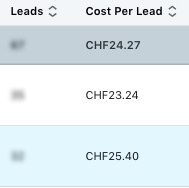
Conclusion
The buyer’s journey evolution in the tech sector brought in a new age for everyone – the age of convenience, connectivity, and consumer empowerment. The evolution in question completely changed the way prospects approach product evaluation, research, and even the purchasing processes in this industry.
Every single potential buyer now has access to a practically endless amount of information, making it drastically easier to compare solutions with one another, seek recommendations, and make informed decisions. Tech companies, on the other hand, now have to drastically change their own approach to marketing, with more personalization during lead generation, as well as other complex digital marketing techniques.
That’s not to say that the current stage of a buying journey is in its final form. On the contrary, it would probably continue its transformation along with technological advancements in the field and the evolution of general customer behavior. Right now, there are several key factors that can help tech companies survive and thrive in the current complex marketing environment – including data privacy prioritization, implementation of digital marketing innovations, and so on. These changes in the marketing approaches are borderline necessary for every company that wants to continue generating leads at a reasonable cost.

